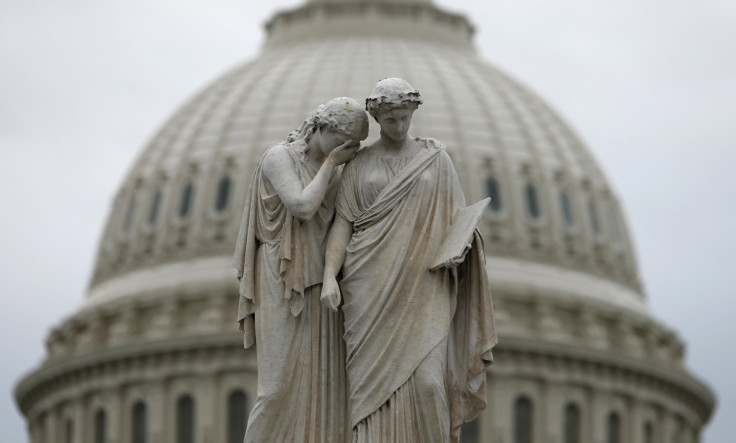US Debt Ceiling 2013: Implications Of A Sovereign Credit Rating Downgrade

The U.S. Congress is battling to scrape together an 11th-hour deal Wednesday to avoid hitting the $16.7 trillion debt ceiling. At midnight, the Treasury Department will no longer be able to borrow, and the government will be one step closer to defaulting on its debts.
“The chaos in Washington has left the U.S. at greater risk of losing its remaining AAA credit ratings even if an imminent default is avoided. However, while this would be a political embarrassment, the impact on financial markets and the wider economy should be limited,” said Julian Jessop, the London-based chief global economist of Capital Economics, in a note to clients.
Jessop noted that there are two possible scenarios. The first, also the more likely scenario, is where some deal is done in Congress to raise the debt ceiling but the U.S. is still downgraded a notch or two by one or more of the major rating agencies -- S&P, Moody's and Fitch. The second, and potentially more damaging, is where the U.S. government does default on some of its debt, prompting much more substantial changes in ratings from all the agencies.
The U.S. has already lost its AAA rating with one agency, S&P, which lowered the long-term rating by one notch, to AA+, in August 2011, after the last debt-ceiling crisis. Moody’s and Fitch continue to rate the U.S. as AAA, but Fitch warned Tuesday that it was putting the U.S. credit rating on negative watch, a step that would precede an actual downgrade.
Fitch said it expects the debt limit will be raised soon, but added, “the political brinkmanship and reduced financing flexibility could increase the risk of a U.S. default.”
However, a downgrade this time around likely won’t be disastrous, according to Jessop.
For a start, a one notch downgrade by Fitch could simply be seen as catching up with S&P. A further downgrade by S&P itself seems less likely, as S&P revised the outlook on its long-term rating from negative to stable as recently as June this year.
Regarding whether the credit rating agency would downgrade the U.S., S&P’s chief John Chambers said Wednesday on “CBS This Morning” that the agency “will have to see what the government’s response is. Our assumption is that there will be a plan, that’s why we rated AA+ with a stable outlook. However the mere fact that we’re having these discussions led us to conclude two years ago that it simply wasn’t appropriate to have a AAA rating on the U.S. government.”
The impact of the S&P downgrade in 2011 was limited by the fact that the U.S. retained its top rating with Fitch and Moody’s, which allowed some investors who can only hold AAA paper to keep their U.S. Treasurys. Nonetheless, very few institutions are constrained in this way. “The main risk is probably to money market funds, but they invest mainly in short-term debt with a separate rating, which the S&P has maintained at the top level of A-1+," Jessop said, adding that even with a lower rating, U.S. government debt would remain “high grade” and 0 percent risk-weighted under the Basel rules.
More generally, rating changes tend to reflect economic, political and fiscal developments that are clear for all to see, and hence already reflected in market prices. There was nothing new in the concerns that Fitch has raised about the debt-ceiling crisis.
“In any event, the pool of AAA-rated issuers has shrunk after the global financial crisis, so that being rated a notch lower is no longer such a big deal. France and the U.K. have lost AAA ratings in recent years, and other European sovereigns have been downgraded much further, with very little market impact,” Jessop said.
© Copyright IBTimes 2024. All rights reserved.






















